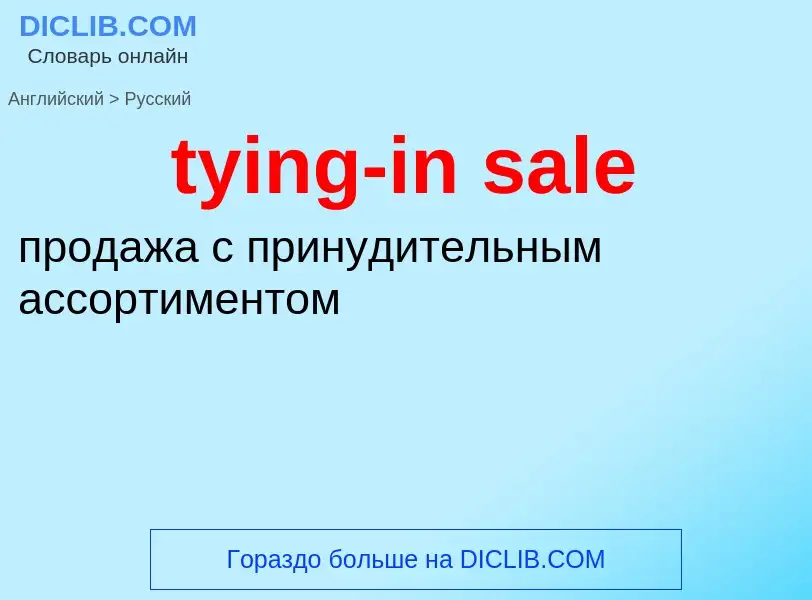Traducción y análisis de palabras por inteligencia artificial
En esta página puede obtener un análisis detallado de una palabra o frase, producido utilizando la mejor tecnología de inteligencia artificial hasta la fecha:
- cómo se usa la palabra
- frecuencia de uso
- se utiliza con más frecuencia en el habla oral o escrita
- opciones de traducción
- ejemplos de uso (varias frases con traducción)
- etimología
tying-in sale - traducción al ruso
Definición
Wikipedia
Tying (informally, product tying) is the practice of selling one product or service as a mandatory addition to the purchase of a different product or service. In legal terms, a tying sale makes the sale of one good (the tying good) to the de facto customer (or de jure customer) conditional on the purchase of a second distinctive good (the tied good). Tying is often illegal when the products are not naturally related. It is related to but distinct from freebie marketing, a common (and legal) method of giving away (or selling at a substantial discount) one item to ensure a continual flow of sales of another related item.
Some kinds of tying, especially by contract, have historically been regarded as anti-competitive practices. The basic idea is that consumers are harmed by being forced to buy an undesired good (the tied good) in order to purchase a good they actually want (the tying good), and so would prefer that the goods be sold separately. The company doing this bundling may have a significantly large market share so that it may impose the tie on consumers, despite the forces of market competition. The tie may also harm other companies in the market for the tied good, or who sell only single components.
One effect of tying can be that low quality products achieve a higher market share than would otherwise be the case.
Tying may also be a form of price discrimination: people who use more razor blades, for example, pay more than those who just need a one-time shave. Though this may improve overall welfare, by giving more consumers access to the market, such price discrimination can also transfer consumer surpluses to the producer. Tying may also be used with or in place of patents or copyrights to help protect entry into a market, discouraging innovation.
Tying is often used when the supplier makes one product that is critical to many customers. By threatening to withhold that key product unless others are also purchased, the supplier can increase sales of less necessary products.
In the United States, most states have laws against tying, which are enforced by state governments. In addition, the U.S. Department of Justice enforces federal laws against tying through its Antitrust Division.

